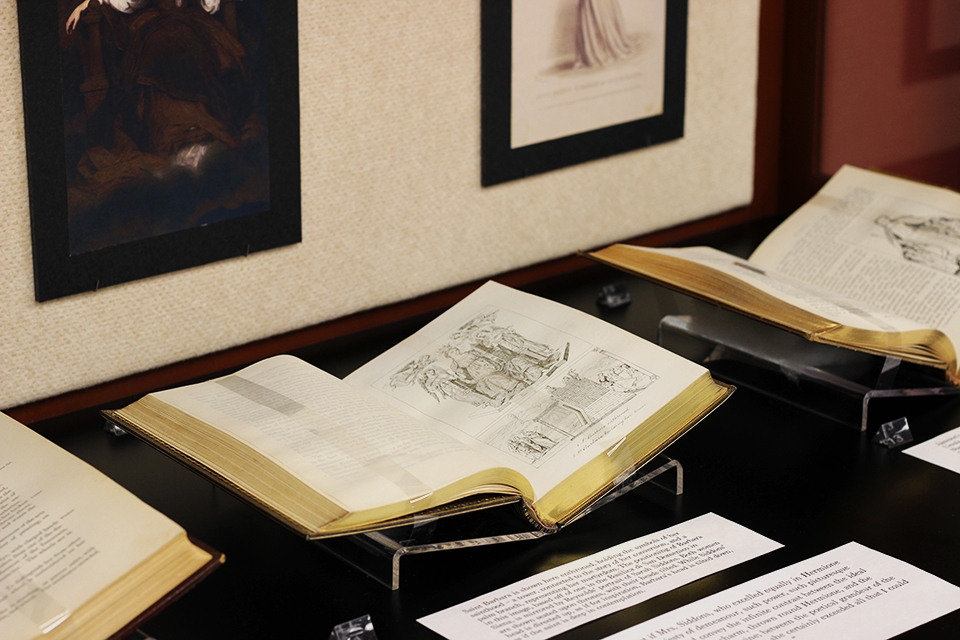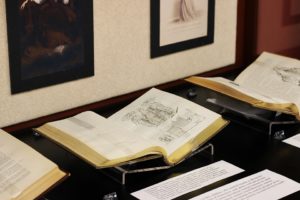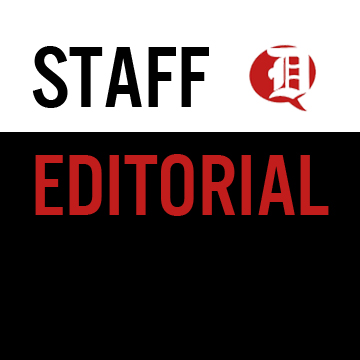
Duquesne University’s Gumberg Library is featuring an exhibit detailing the works of 19th-century writer and art critic Anna Brownell Jameson. The newly-introduced exhibit will be open for the Duquesne community to visit until May 3.

Duquesne University’s Gumberg Library is featuring an exhibit detailing the works of 19th-century writer and art critic Anna Brownell Jameson. The newly-introduced exhibit will be open for the Duquesne community to visit until May 3.
Olivia Donia | Staff Writer
11/29/2018
A new exhibit on 19th-century writer and art critic Anna Brownell Jameson is on display for the Duquesne community on the first floor of the Gumberg Library.
The exhibit, which opened Nov. 27 in the Simon Silverman Phenomenology Center Gallery, is curated by Laura Engel of the English department and her graduate fellow, Angeline Morris. The display features several editions of Sacred and Legendary Art, Jameson’s thorough examination of Catholic art featuring female saints and a rare illustrated edition of Jameson’s Shakespeare’s Heroines.
Jameson is known particularly for her focus on famous female figures in Catholic theology and art, as well as in stage and theater. She concentrated especially on examining the merit of Shakespearean heroines — particularly Lady Macbeth and Portia, as seen in the Gumberg exhibit — at a time when many female characters were dismissed, ignored or vilified. Jameson discussed at length the merits of female saints, characters and actresses, and particularly focused on what makes a good female role model.
It is this careful examination of female characters, which was unusual for Jameson’s time, that intrigued graduate fellow Angeline Morris.
“Getting a chance to see a woman pull Shakespeare characters and say, ‘This is a good role model for young women,’ was an incredible opportunity,” Morris said.
For Engel, the most fascinating part of Jameson’s work was how she linked theological figures like Catholic saints to popular actresses and stage heroines of her time. The project, after all, started with research Engel was doing on actresses and celebrities in the 1800s. In her research on actresses of the time like Sarah Siddons and Fanny Kemble — to whom Jameson actually dedicated one of her works — Engel came across the Gumberg Library’s vast collection of Jameson’s works on both Catholic art and stage heroines.
“I saw a lot of similarities between how [Jameson] rapturously talks about theatrical heroines and saints,” Engel said.
This particularly piqued her interest, she said, as many celebrity theorists trace the idea of celebrity worship back to religious idolatry. From there, Engel did more research into the subject with Morris with the help of funding from the Albert Labriola Fund and an internal National Endowment for the Humanities grant from the McAnulty College and Graduate School of Liberal Arts. Morris, in fact, located a signed, barely-touched copy of Jameson’s works from the 1850s, which the library and the English department helped purchase.
Engel and Morris’ extensive research ultimately lead to them pitching the exhibit idea to the Gumberg Library.
“The librarians are amazing,” Engel said. “Tracie Ballock and Tom White were very enthusiastic about it.”
The exhibit itself features the rare copies of Sacred and Legendary Art and Shakespeare’s Heroines, with many of the latter’s illustrations, done by Walter Paget in the 1880s, open for display. The display highlights some of Jameson’s most pertinent observations about theatrical heroines and female religious figures, and features analysis and commentary on her works.
The Anna Jameson’s Women: Heroines, Actress, and Saints Exhibition will be in the library’s first-floor Simon Silverman Phenomenology Center Gallery until May 3.



